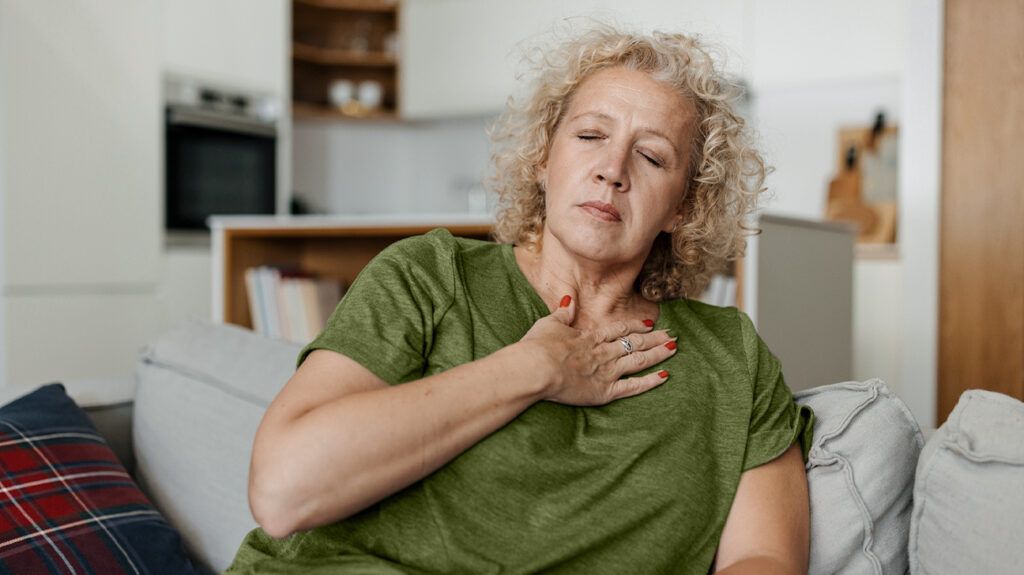Chronic cholecystitis is long-lasting inflammation of the gallbladder. Symptoms may include recurring abdominal pain in the upper right side, nausea, vomiting, and bloating.
Cholecystitis is inflammation of the gallbladder.
While gallstones blocking the bile duct are the most common cause of cholecystitis, other factors, such as infections and thickened gallbladder walls, can also trigger this condition.
Without treatment, this inflammation can persist for months or even years. It can lead to recurrent pain episodes and potential complications such as gallbladder rupture, abscesses, and even indirect liver damage from bile backup or infection spread.
This article discusses the symptoms, causes, risk factors, and complications of chronic cholecystitis.

Chronic cholecystitis
Fatty foods can make the pain worse, and episodes may occur without warning and persist for weeks or months.
Other possible symptoms of chronic cholecystitis
- nausea and occasional vomiting
- bloating
- flatulence
- fever
- tachycardia, which is a fast heart rate
There are two forms of chronic cholecystitis.
Calculous cholecystitis is the
Acalculous cholecystitis is a less common but potentially life threatening form of chronic cholecystitis. It
One possible cause of chronic cholecystitis is biliary sludge, which is a buildup of substances that happens when bile stays in the gallbladder for too long. Another possible cause is a gallbladder infection.
The following factors may increase a person’s risk of chronic cholecystitis:
- having obesity
- being pregnant
- being at an advanced age
- being female
- being of Hispanic or Pima Indian descent
Diagnosing chronic cholecystitis
A doctor may order the following tests to confirm a diagnosis:
- Hepatobiliary scintigraphy: Doctors may use hepatobiliary scintigraphy, which is also known as a HIDA scan with cholecystokinin. This involves injecting a radioactive tracer into a person’s vein before using a special camera to observe the tracer’s movement in the gallbladder.
- CT scan or ultrasound: In some cases, a doctor may also order a CT scan or an ultrasound to visualize the gallbladder and detect any abnormalities or signs of inflammation.
- MRI: People who cannot undergo a CT scan or ultrasound may instead have an MRI to assess the gallbladder and surrounding structures.
The
Some doctors may recommend an open cholecystectomy if a laparoscopic procedure is not possible or if there are complications. An open cholecystectomy requires hospital admission and a longer recovery time than a laparoscopic cholecystectomy.
For people who are not suitable candidates for surgery, nonsurgical options may include:
- a low fat diet
ursodeoxycholic acid to dissolve gallstones- endoscopic retrograde cholangiopancreatography to remove gallstones
percutaneous cholecystostomy to drain the gallbladder
Possible complications of chronic cholecystitis
- infection and pus buildup in the gallbladder
- gallstone ileus (a
rare mechanical bowel obstruction) - abscesses
- fistulas
- gallbladder cancer
The outlook for chronic cholecystitis is
If a person does not receive treatment for it, chronic cholecystitis may result in complications such as infection, gallstone ileus, abscesses, fistulas, and potentially gallbladder cancer.
Below are the answers to some frequently asked questions about chronic cholecystitis.
Can chronic cholecystitis be treated without surgery?
Yes, in some cases, a person and their doctor can manage chronic cholecystitis without surgery.
Nonsurgical treatment options include a low fat diet, medication to dissolve gallstones, and procedures such as endoscopic retrograde cholangiopancreatography to remove gallstones or percutaneous cholecystectomy to drain the gallbladder.
Is cholecystitis serious?
Cholecystitis can be a serious condition if a person does not receive treatment or if complications arise.
Acute cholecystitis requires timely medical intervention to prevent further complications such as gangrenous cholecystitis or perforation.
People who experience a sudden, sharp pain in their upper right abdomen or have fever, chills, and yellowing of the skin should seek immediate medical attention, as these may be signs of a more severe form of cholecystitis.
Chronic cholecystitis is a condition involving inflammation of the gallbladder. It often occurs as a result of repeated or prolonged episodes of acute cholecystitis.
Symptoms of chronic cholecystitis can include abdominal pain, nausea, vomiting, and bloating.
Although nonsurgical treatments can be effective in managing chronic cholecystitis, surgery to remove the gallbladder is often necessary to prevent further complications.
